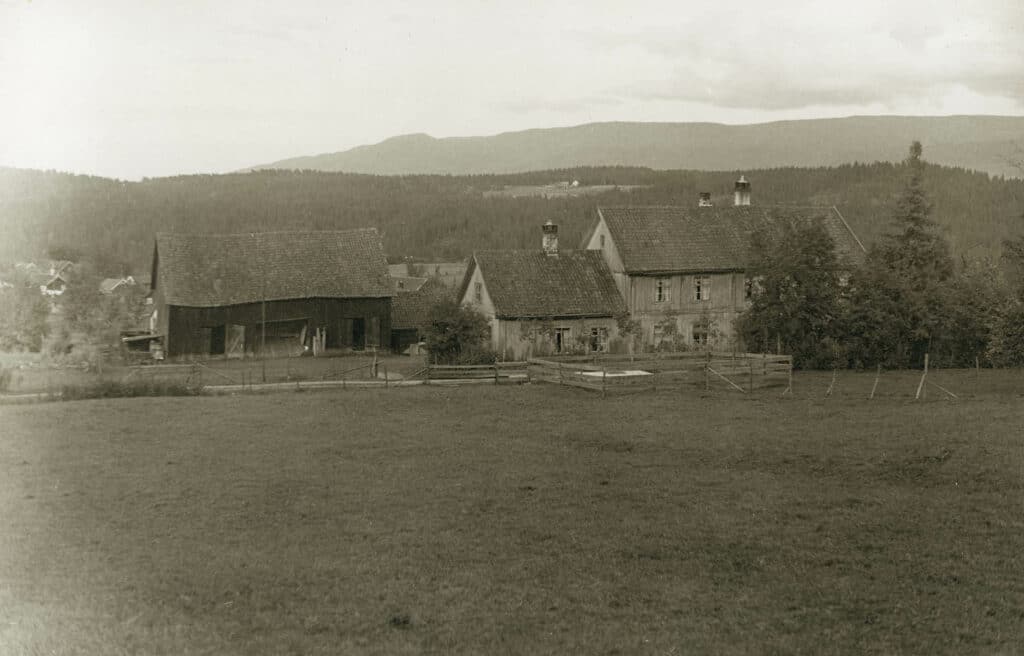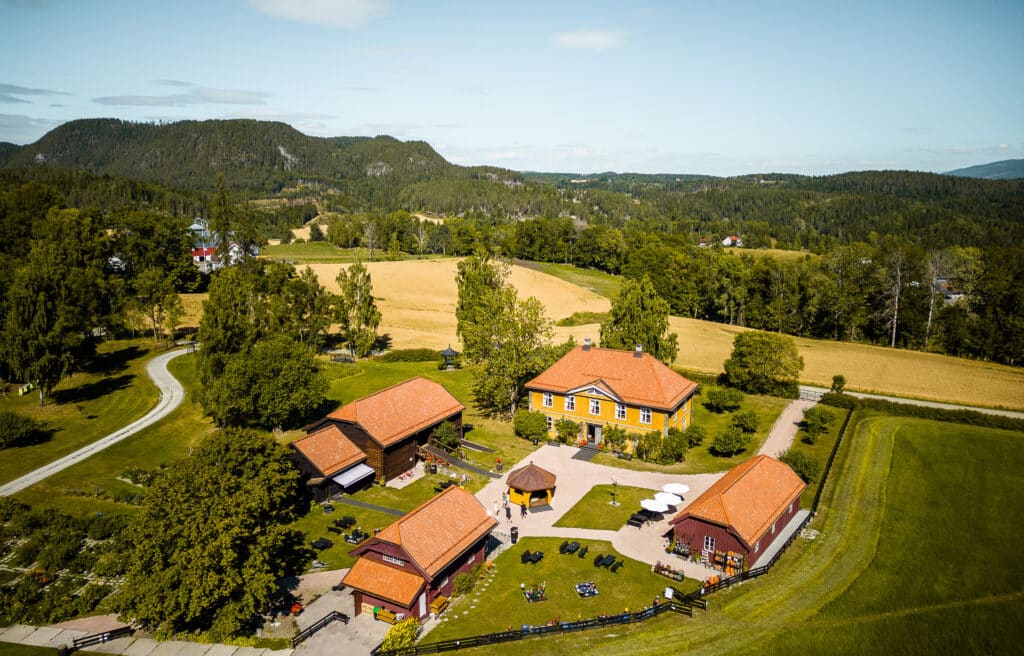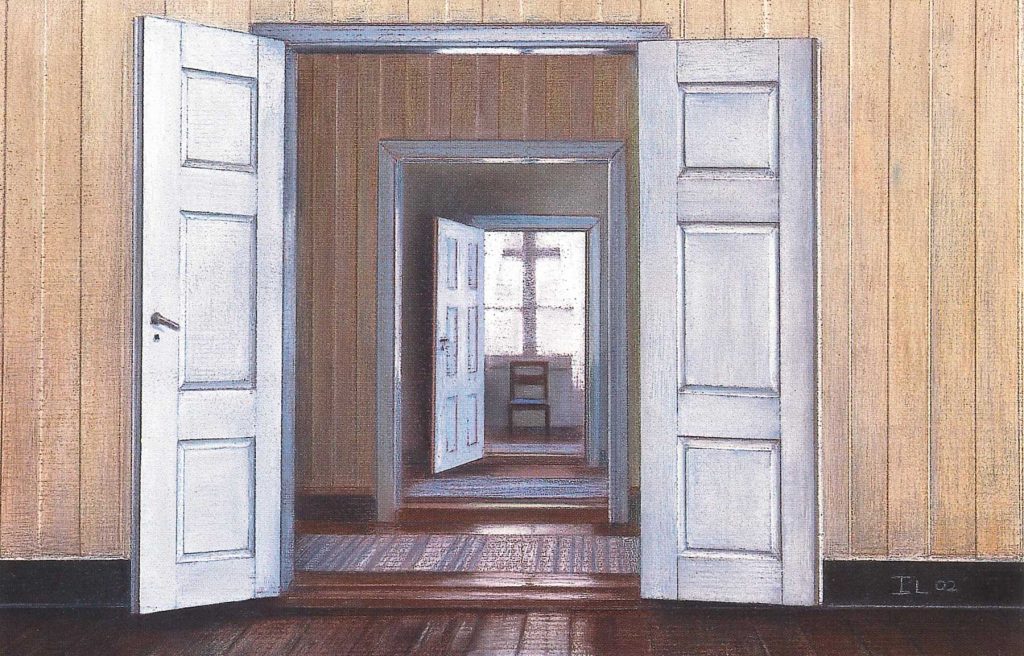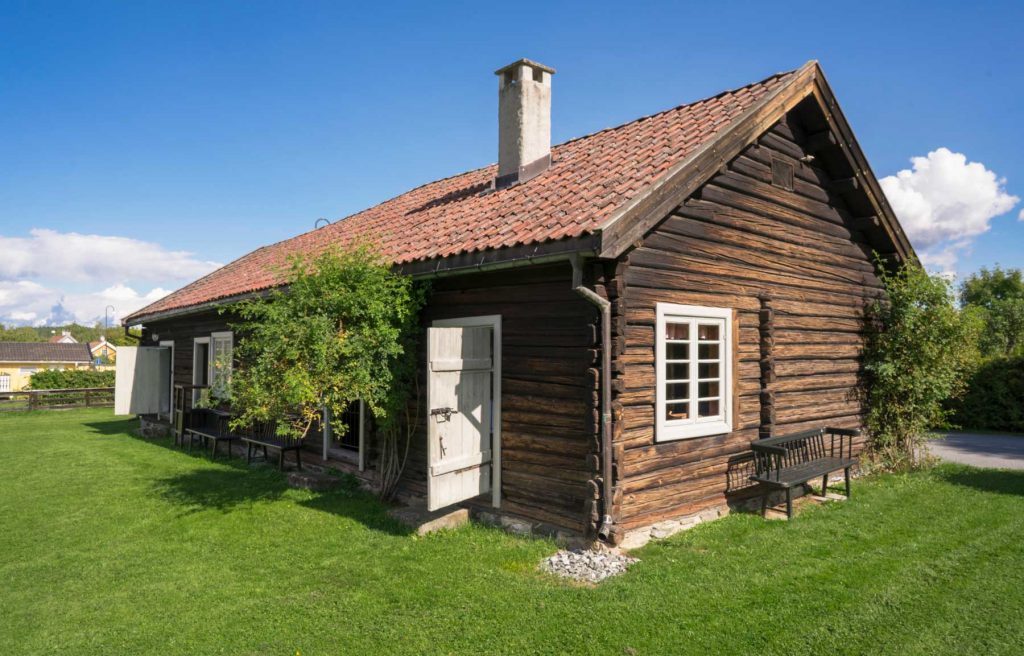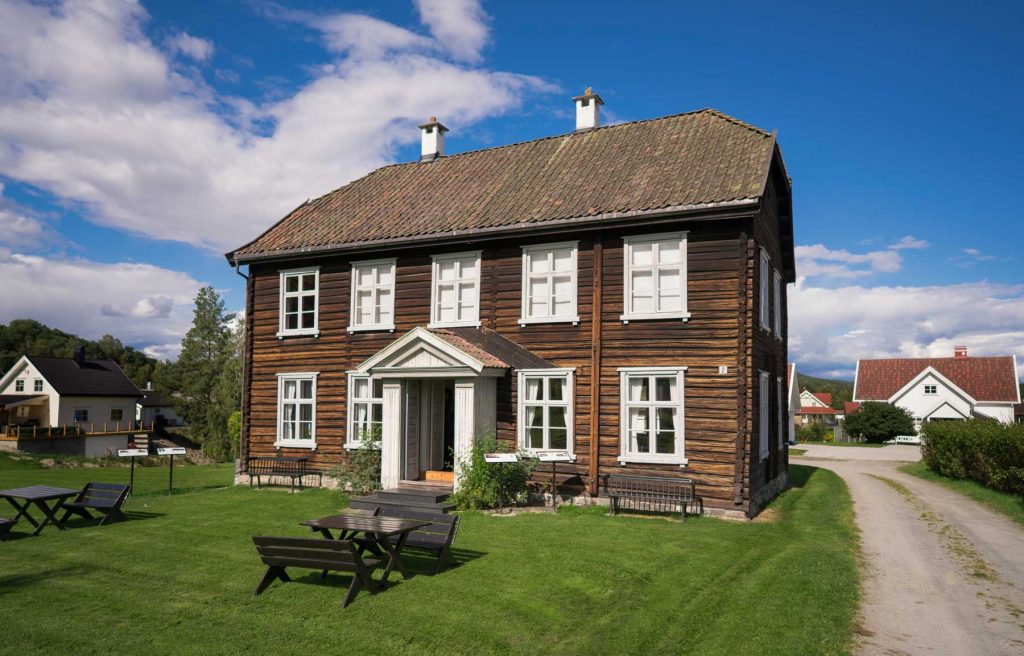Doctor's House at Nymoen
The starting point for the Foundations World Heritage exhibition is the newly purchased Doctors house her at Nymoen. The house was built between 1827-28.
Part of the whole
The building was to house the newly employed occupational physician, Ludvig Holberg Arentz, and his family. From Arentz’s time, the house was used by the work’s employed doctors right up until the 1890s.
The Blue Colour Works was obliged by law to employ a doctor or surgeon. All mines operating in Norway had to. This was implemented to force the mining industry to care for their own workforce. Mines were dangerous workplaces. Injuries were everyday occurrences. Also, large families lived cramped in small communities. These communities were good breeding ground for epidemic diseases.
The works doctor could potentially have many patients. In 1842, the then doctor, Heinrich Arnold Thaulow, had 3,000 people in his care. Operations were performed, primarily amputations. Diseases were treated with herbs, salves, bloodletting, enemas, and emetic powder. In the event of epidemic outbreaks, quarantine arrangements were introduced and enforced by the works doctor and the leaders.
All permanent employees were entitled to up to 2 months’ half pay in the event of illness, and up to 2 months’ full pay in the event of an injury. In case of disability or infirmity of old age, the workers could apply for founds from the works own poor relief. The same applied to widows and left-behind children. A note from the doctor was essential for the worker to gain access to these social goods. The doctors house here at Nymoen is thus a manifestation of the social history of the Blue Colour Work in Modum.
Thaulow-Dedichen
A FAMILY THAT LEFT IT’S MARK
There was a conscious investment in a good health service at Blaafarveværket. When Dr. Heinrich Arnold Thaulow was offered the position of doctor in 1839, he had already made a name for himself by introducing European bathing culture by building the Sandefjord bath (in 1837).
It was part of the position of company doctor to look after the medical needs of the individual employees and their relatives, but also to develop health-promoting systems for the company community.
The doctor was a pharmacist and made the necessary preparations for medical treatment. Dr. Thaulow’s brother Harald Thaulow ran the Lion Pharmacy in Christiania. The Thaulow family represented a cultural center in the young nation of Norway. The doctor’s triplets were Henrik Wergeland and Camilla Collett, he himself was the uncle of the painter Frits Thaulow.
In 1860, Hans Gabriel Sundt Dedichen was employed as an assistant doctor at the Blaafarveværket. In 1862 he entered marriage with one of Dr. Thaulow’s daughters, Henriette. Eventually, Dr. Thaulow became involved in Modum Bad, which he founded in 1857. Dr. Dedichen took over his position as occupational physician at Blaafarveværket in 1862 and moved into the Doctor's House.
Among Dedichen’s nine children, we find several who distinguished themselves both locally and nationally in various ways. Henrik Dedichen reformed the treatment of mental disorders and had forward-looking assessments of, among other things, the view on homosexuality, the chemist Georg Maria Dedichen was a product developer at Freia and, among other things, responsible for Firkløver and Monolit. Hagbart Dedichen founded Modum’s first electricity plant and Christian physician Lucien Dedichen founded Modum’s tuberculosis home.
Through Dr. Dedichen’s sons, close ties were also established with the Kristiania bohemians. Through the so-called Friluftsakademiet that Frits Thaulow staged at Modum in the autumn of 1883, realism was launched in Norwegian art. The meeting place for the young artists, including Edvard Munch, Kalle Løchen, Jørgen Sørensen and Gustav Wentzel, was the medical home. Modern ideas were diligently discussed over the table. Both Johan Fredrik Thaulow and Henriette Dedichen recorded voluminous descriptions of their lives. Today, these are unique sources for the understanding of life at Modum in the 19th century.
